[ad_1]
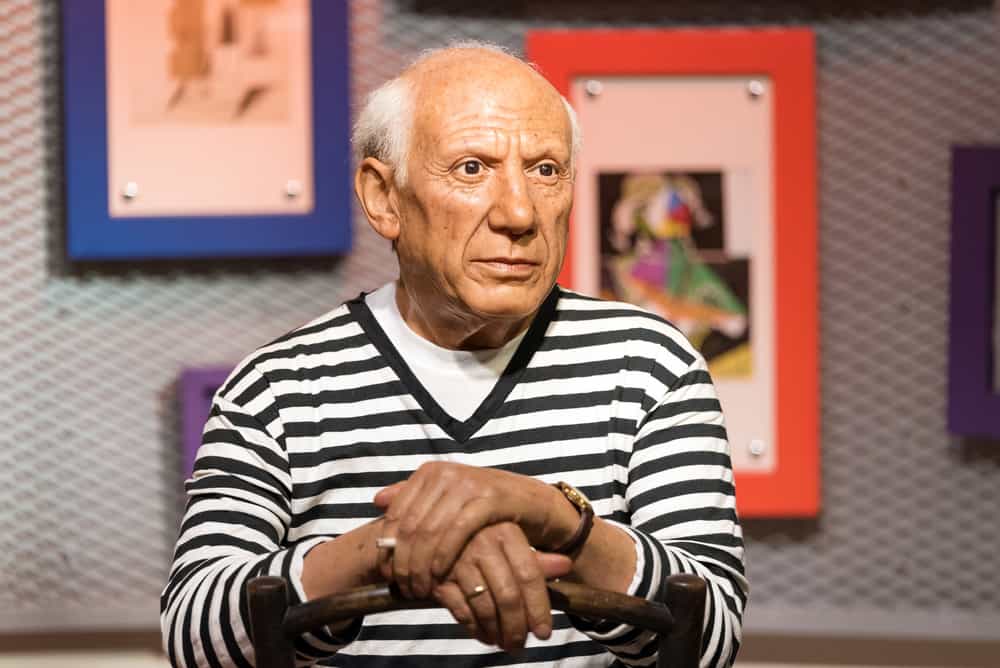
Pablo Picasso is one of the most famous figures in art history and made such a major impact in his 80 years of artistry that his influence can still be felt in art over a century later.
Few artists have pushed art forward as much as Picasso has, and his legacy is still celebrated to this day.
Over the course of a century, new fans of his art have rediscovered his portfolio and continue to visit his pieces which are in museums across the globe.
Why Is Picasso So Famous?
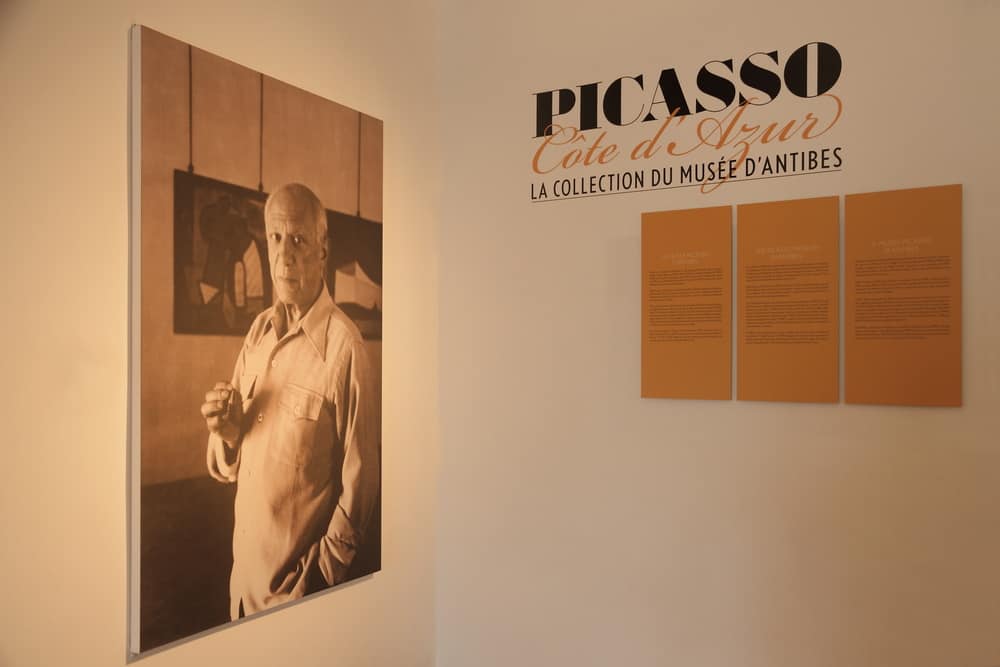
Legendary artist Pablo Picasso is famous thanks to his pioneering work in Cubism and collage.
His contributions to Surrealism, Symbolism, sculpting, printmaking, and ceramics have helped these art forms become what they are today.
Picasso’s creation of Cubism was contributed to by multiple pre-existing art forms, including everything from tribal art to archaic art.
He was mainly influenced by artists such as Henri Rousseau and Paul Cézanne.
As Picasso began to deconstruct the rules of perception in traditional art, Cubism began to take shape.
The impact that Cubism had on modern art is incomparable and has completely changed the way that artists express form.
When Pablo Picasso first introduced Cubism to the world during the early 1900s, he shocked even his closest friends with the introduction of Les Demoiselles d’Avignon in 1907.
This piece depicts a group of nude women in seductive poses and is the first popular piece from Picasso where his iconic art style began to take shape.
Due to the subject matter of the painting, Les Demoiselles d’Avignon was not released to the public until 1916 and is considered to be proto- or pre-Cubism.
In 1912, Picasso released the first ever collage piece, which was titled Still Life With Chair Caning.
One of Pablo Picasso’s most popular Cubism pieces is The Three Musicians, which Picasso created using oil on canvas in 1921.
This was the largest and last painting of Picasso’s first iteration of Cubism, which was known as synthetic Cubism.
Over the course of his career as an artist, Picasso found the majority of his inspiration in either political topics or the women he fancied.
In 1937, Picasso created a painting in response to the bombing of a Basque town during the Spanish Civil War titled Guernica, which he painted in one month as a centerpiece for the Paris World Fair.
When Was Pablo Picasso Born?
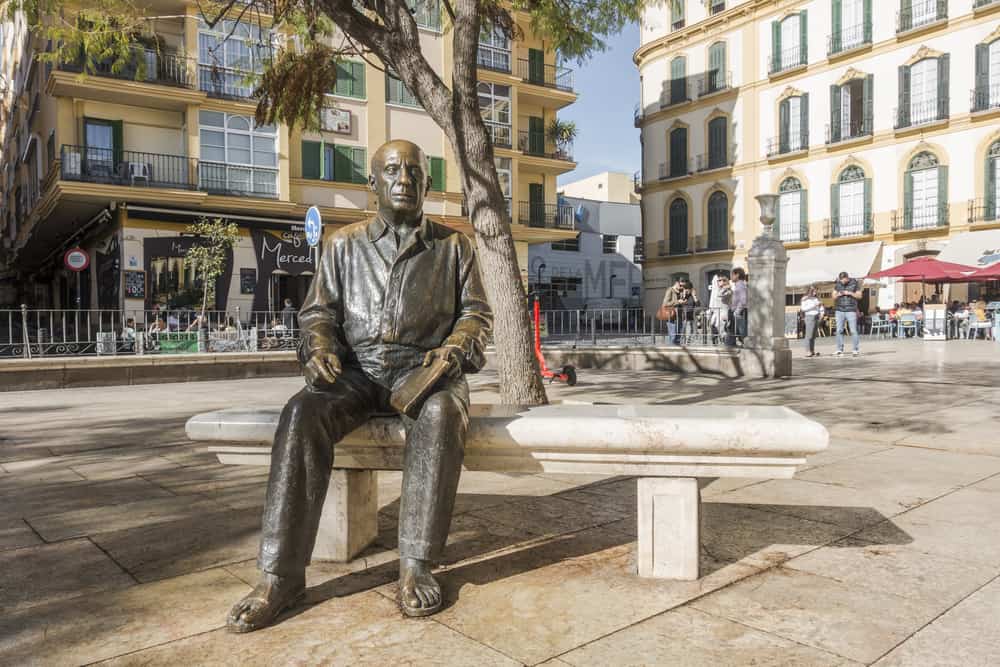
Pablo Picasso was born on October 25th of 1881 and was the son of Spanish art instructor Josė Ruiz Blasco, who was well known in their coastal Spanish hometown of Málaga.
Picasso started studying art at an incredibly young age and later began studying at a variety of art schools between 1892 and 1897.
One of the earliest pieces from Picasso’s collection is Study of a Torso, which came from a time when Picasso was still studying live models and statues from both the Greek and Roman empires.
After years of studying Classism, Picasso began to paint family portraits and experimented with the posing of his subjects.
When Picasso wasn’t painting family portraits, he was hiring the locals to pose for his more experimental paintings.
With the help of one of Picasso’s wealthy uncles, he hired an old fisherman named Salmerón and created The Old Fisherman in 1895.
Pablo Picasso wouldn’t begin to break away from Classism until 1899 when he joined an inner circle of avante-garde artists from Barcelona.
The group met at a local bar called Els Quatre Gats, where artists such as Carles Casagemas and Jaime Sabartès met with Picasso.
These meetings in the local bar led to the creation of Sabartès Seated, a quick doodle that Picasso created in 1900.
By the beginning of 1900, Picasso moved to Paris, France and decided to permanently settle in the French capital only 4 years later.
During his first year in Paris, Picasso began to paint the exciting nightlife of the youthful Parisians and began experimenting with the techniques he would use.
One of Picasso’s most iconic pieces from this period was Le Moulin de la Galette from 1900.
Despite his young age, Pablo Picasso was able to move to another country and grew as an influential modern artist.
How Did Pablo Picasso Die?

Pablo Picasso died of a heart attack that was brought on by pulmonary edema, which is when fluid fills the lungs.
Before his passing, he had told a friend that he feared being unable to work as an artist more than death itself and was lucky enough to never know a day without his beloved work.
The day before this legendary artist passed away, he had spent his time at his French hilltop villa called Notre-Dame-de-Vie like any other day.
After a morning of work, Picasso spent his afternoon on a walk through the garden surrounding his home and looked at the Maritime Alps that towered in the distance.
His wife Jacqueline Roque had been growing fruits and vegetables in their garden, and Picasso decided to take some inside to use as inspiration for his next painting.
By the time evening rolled around, he was hosting Armand Antebi for dinner and was reportedly in good spirits.
By 11:30 am on April 8th of 1973, Picasso and his wife knew something was wrong when he couldn’t get out of bed.
His wife immediately called for a doctor, but the artist died only 10 minutes later.
Following his death, the messy relationship between Pablo Picasso and his children was brought back to the public eye.
While his widow Jacqueline Roque, first daughter Catherine Hutin, and his first son Paulo Picasso were at his funeral to accompany his body, his children Maya Picasso, Claude Picasso, and Paloma Picasso were barred from attending the funeral.
Not only were some of his children banned from attending Pablo Picasso’s funeral, but there were also security guards to bar Marie-Thérèse Walter and even some of his old friends from attending the funeral as well.
What Is Pablo Picasso’s Most Famous Painting?
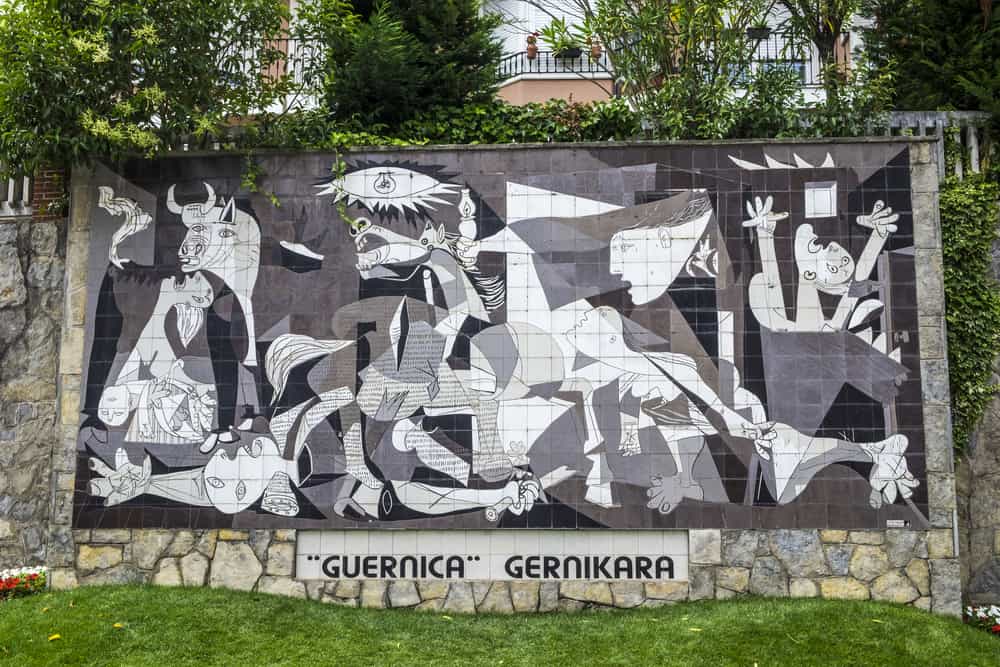
Pablo Picasso’s most famous painting is Guernica, which was used as the centerpiece at the Spanish Pavilion at the World Fair held in Paris in 1937.
Picasso had been moved by the rage he felt over the Spanish Civil War and what occurred in the Basque town of Guernica.
The massive painting depicts what took place during the Spanish Civil War, but the event that pushed Picasso to the creation of this piece was the bombing of Guernica by General Francisco Franco through the use of German planes.
Another piece from Picasso’s portfolio that is considered to be one of his most famous is Le Demoiselles d’Avignon.
This was the piece that helped define Picasso’s art style and the creation of his new genre.
When Picasso first released this proto-Cubism piece in 1907, he received a lot of negative reactions from the public because they weren’t used to such sexualized paintings.
Picasso helped artists of the time branch out not only with their art style but their subject matter as well.
One of the pieces that best summarizes what Cubism came to be is The Weeping Woman from 1937.
It is commonly used as a textbook example of what Cubism is.
This painting is best known for its perspective of Dora Maar’s face showing both the front and side views at the same time.
Another favorite textbook example of Picasso’s range in art style is The Old Guitarist, which was created by Picasso while he was barely surviving as a starving artist in Barcelona.
This 1903 painting is one of the best examples of how Picasso experimented with color and is considered to be the start of his “blue phase”, where he was suffering from depression and used various shades of blue to portray that feeling.
Who Were The Women Featured In Picasso’s Art?
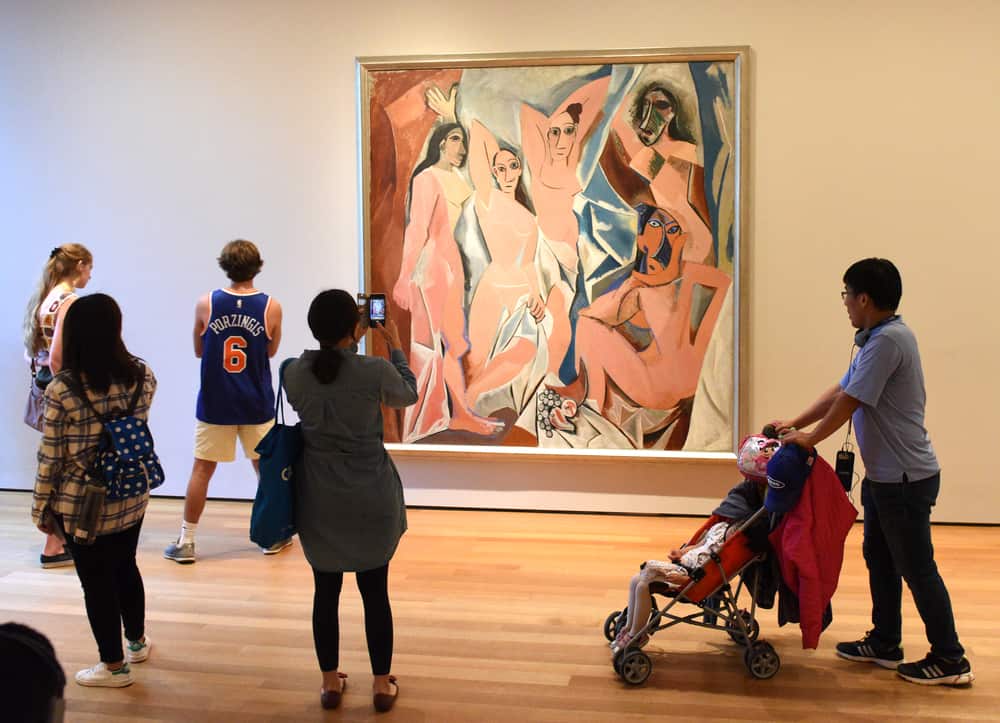
The most influential women featured in Pablo Picasso’s art include Fernande Olivier, Eva Gouel, Olga Khokhlova, Marie-Thérèse Walter, Dora Maar, Françoise Gilot, Genevieve Laporte, and Jacqueline Roque.
One of the first women in Picasso’s life to make an influence on his art was artist model Fernande Olivier, whom he dated from 1904 until 1912.
Although Olivier was married at the time of meeting Picasso, they stayed together for 7 years, and she even lived with him before she decided to break up with the artist.
A few months later, Picasso began dating Eva Gouel and was with her until her mysterious death of either tuberculosis or cancer in 1915.
Over the course of their relationship, Picasso would put “I Love Eva” into his paintings.
Despite Picasso taking care of Gouel up until her death, the artist still managed to maintain a side relationship with Gaby Lespinasse.
In 1917, Pablo Picasso met Russian ballet dancer Olga Khoklova while working on a play together.
Only a year after knowing each other, the unlikely pair decided to get married.
Their marriage was quickly filled with conflict because Khokhlova’s high-society lifestyle conflicted with Picasso’s bohemian lifestyle.
Despite their marriage struggles, the couple had their son Paulo Picasso in 1921.
The birth of his son led Picasso to create many paintings surrounding the theme of mother and child.
While Picasso was still married to Khokhlova, they lived across the street from 17-year-old Marie-Thérèse Walter, and the pair began having an affair in 1927.
The truth behind their relationship wouldn’t come out until Khokhlova was told of Walter’s pregnancy in 1935.
Marie-Thérèse Walter was the inspiration for Vollard Suite, but she was replaced by Picasso only a year after the birth of their daughter Maya.
By 1936, photographer Dora Maar had become his next love interest.
Did Pablo Picasso Steal The Mona Lisa?
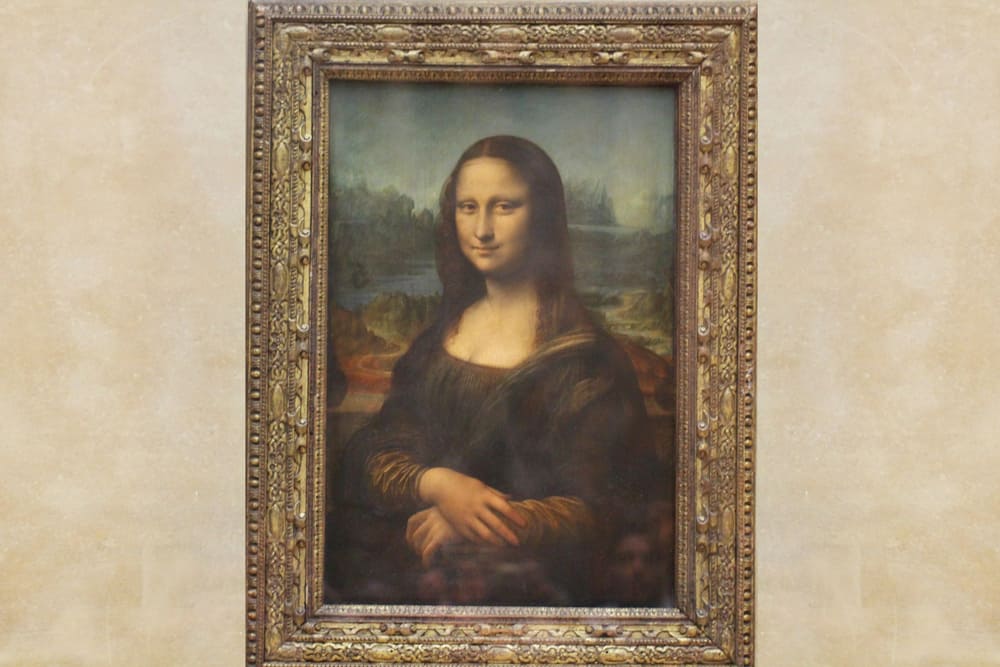
No, but Pablo Picasso was still arrested for stealing the Mona Lisa while he was a suspect during the investigation into who stole the famous painting.
The legal problems started for Picasso on August 22nd of 1911 when artist Louis Béroud was visiting the Louvre to take inspiration from the Mona Lisa.
After Béroud asked a security guard where the painting was, the pair discovered that the painting was missing from its normal place.
The security guard attempted to reassure Béroud that the painting had probably just been taken by the photography department, but Béroud would not move from the spot until he saw the painting returned to its place.
After checking multiple departments around the Louvre, the painting was declared stolen, and the hunt for the most famous painting in the world began, making international headlines.
The locals began to accuse Picasso of stealing the painting due to a previous art theft case he had been a part of.
After coming to Paris in 1900, Picasso was introduced to Géry Pieret, who was the assistant of poet Guillaume Apollinaire.
Pieret knew that Picasso was a fan of 3rd and 4th-century Iberian sculptures, so he took a trip to the Louvre and stole multiple pieces with ease.
The Louvre consisted of over 1,000 rooms and the security team was too sparsely placed inside the museum, making it incredibly easy to steal art.
When Pieret handed over the stolen pieces, Picasso paid 100 francs or about $440 modernly.
Although the pieces had been missing for years, Picasso and Apollinaire had been proudly displaying them.
With the theft of the Mona Lisa, the Louvre took inventory and released a list of missing pieces and their description.
Neither artist had known that the pieces were stolen until the 1911 theft.
Was Pablo Picasso Dyslexic?
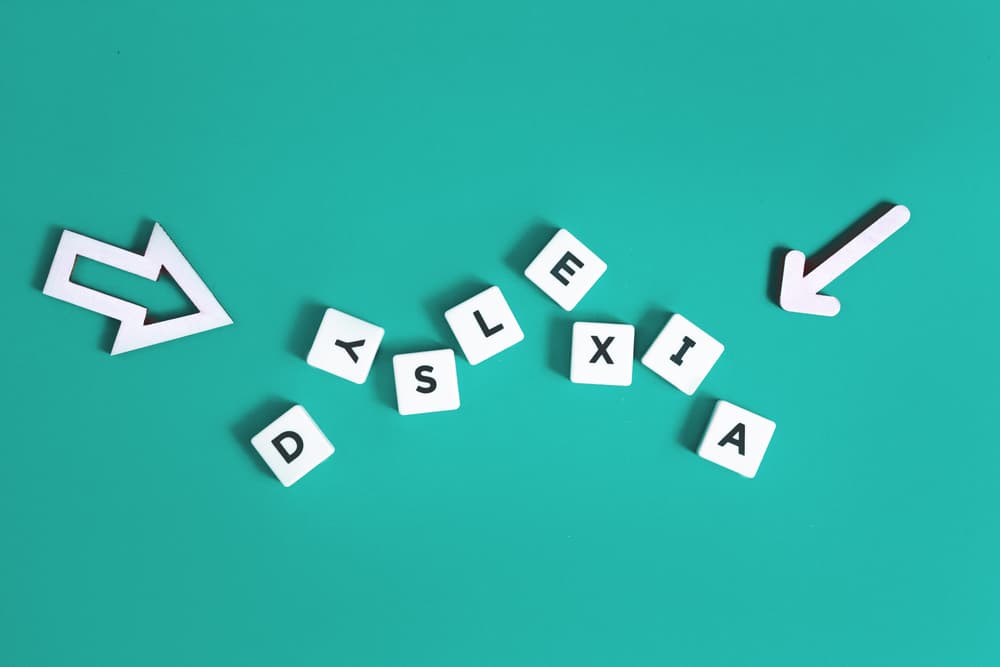
Yes, Pablo Picasso was dyslexic, and his dyslexia helped show the world a new perspective.
Dyslexia is a learning disability that can cause the orientation of letters to be swapped in the minds of those who have the disability.
Although dyslexia helped Picasso excel at art, it caused him to be labeled as a bad student and often landed him in academic trouble.
In his early educational years, Picasso was declared “reading blind” as a way to simplify the fact that he struggled with reading.
After years of seeing his son struggle in traditional schools, Picasso’s father moved him over to art schools when he was only 14 years old to help his son excel at his natural talent.
Despite being enrolled at Barcelona’s School of Fine Arts, he would often skip class and instead choose to study the surrounding town for his own art.
Pablo Picasso serves as a classic example of why dyslexics shouldn’t look down on themselves for not excelling at tasks surrounding reading and instead should use their unique perspective to see the beauty that neurotypical people may overlook.
Did Pablo Picasso Have Any Pets?

Yes, Pablo Picasso was a dog owner who had so many dogs over the course of his life that he couldn’t even remember all the different breeds if he tried.
His dogs were one of the most important parts of his life and his artistic career.
Picasso had a variety of different breeds, including dachshunds, boxers, poodles, Dobermans, Afghan hounds, a German shepherd, and a variety of mixed-breed dogs that he called “random bred.”
Some of the dogs that the artist owned were borrowed or stolen from his friends.
One of the best-known stolen dogs that Picasso had was his dachshund Lump, who was originally owned by famous photographer David Douglas Duncan.
Duncan had originally brought Lump with him to visit one of Picasso’s estates.
Lump immediately became attached to Picasso which resulted in the artist asking Duncan “You will leave him, of course?” Like many of Picasso’s other friends, Duncan felt it was an offer he couldn’t refuse, and Lump went on to be featured in multiple versions of Picasso’s painting Las Meninas.
One of the last dogs that Picasso owned was an Afghan hound named Kabul.
[ad_2]
